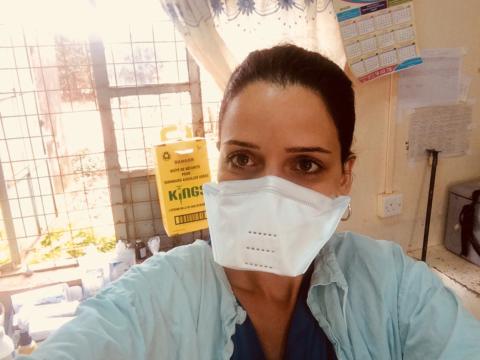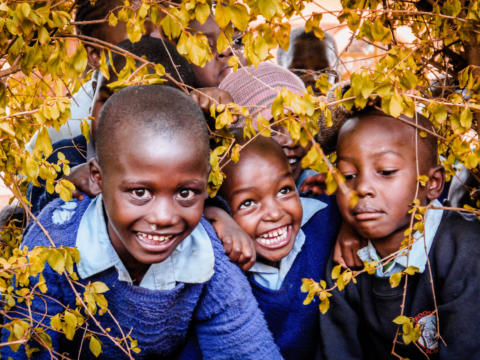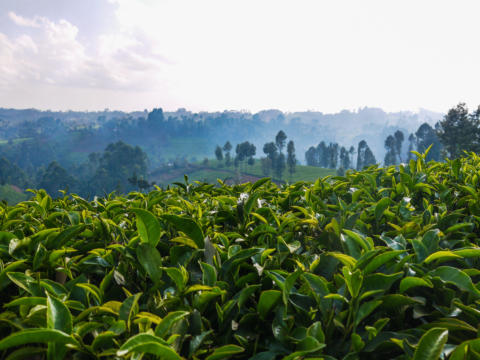Only 600€ per week!
Coffee and Tea from Farm to Cup
Muranga County - Kenya
Learn what it takes to get that java you love from farm to cup and help small local coffee farmers.Then get a sip of tea knowledge as an added bonus.
Get the inside scoop on farming, pulping, milling and getting the coffee crop to market, as you learn about the plight of most small coffee farmers in Kenya. Other program activities include visiting local coffee and tea farms, exploring local initiatives which support sustainable development goals, coffee roasting, and of course, coffee tasting.
Program Description
This program is an opportunity to learn and enjoy! It is full of everything you ever wanted to know and all of the things you didn’t know you needed to know, about what it takes to fill your daily cup of coffee. You’ll travel along the journey from seedling planted to berry harvested, to the bean that is eventually milled and sold. When it ends up in your cup tasting delicious, it has come a long way and you would be surprised just how much work it took to get it there.
You will learn: terms related to the coffee industry, the difference between green coffee and the roasted varieties you know, some of the science behind coffee and how coffee is graded. This comprehensive program explains how the current horizontal economic chain, where the auction and distribution of the crop are controlled by a few, is economically unsound for the small local farmers and their reasons for wanting to replace it with a more beneficial vertical value chain, where farmers are able to earn a more equitable share of the profits.
There is also an opportunity to visit and support a local Coffee Farmers Cooperative, where you will see how joining together has helped small farmers survive challenges related to low crop production and inefficient farming methods. This team approach has provided greater opportunity to improve the grade of coffee being produced and to reduce the probability of poverty for those pouring their life into their crop.
While it is an education, it is also a chance to support local farmers while you enjoy and explore the lush surroundings. The program week will include hikes around local farms, a visit to a tea factory, as well as learning about the preparation of local meals that will utilize infusions of coffee and tea in the recipes.
Topics of Learning/Visits:
- Introduction to Coffee Thematically/Coffee Seedlings/Coffee Farming and Agronomy. Coffee farming value chain and emerging issues. I.e. Climate change effects etc
- Primary Processing of Coffee i.e. Learning about Coffee pulping/washing or dry processing and everything that happens in this section of the”factory role locally”.
- Secondary Processing of Coffee. In this section of study trip we will conduct visits of how the coffee is dehusked after drying. The marketing strategies of green coffee. Coffee policy in warehousing and logistics in Kenya.
- Tertiary Processing of Coffee; We Will study the role of Local micro coffee Roastery/Learn fundamentals of Coffee Roasting/Fundamentals of Coffee Grinding/Coffee Brewing with Barista skills/Sensory analysis i.e. Coffee Cupping/Tasting.
- We Will also use Coffee as an ingredient of gastronomy where we Will prepare local meal with coffee in the recipe.
- After Learning about Coffee Roasting we will Learn about Tea processing from farm to cup.
Aims & Objectives
- Learn about sustainable development goals related to coffee production
- Engage with local community and coffee farmers to create a cultural exchange
- Support local initiative aimed at improving the lives of coffee farmers
- Broaden your perspective on all aspects of the coffee industry
Schedule
Sunday
Arrive at the local farm/lodge and get settled in for a great program week.
Monday
- Breakfast at Lodge
- Thematic Introduction to Coffee Terms and Methods
- Visit Coffee Farm to get a firsthand look at the coffee plants and explore farming practices
- Lunch at Lodge
- Barista Skills: Latte Art
- Enjoy a leisurely afternoon on the farm grounds
- Dinner
Tuesday
- Breakfast
- Visit a local Coffee Pulping Station and see the machinery
- Primary Coffee Processing Topics, including how coffee is picked, pulped, washed & graded
- Lunch
- Barista Skills: Coffee Grinding
- Enjoy a leisurely afternoon around the farm
- Take a quick run to the local market to pick up snacks or sundries
- Dinner
Wednesday
- Breakfast
- Thematics of Secondary Processing
- Visit micro milling station for hands-on-learning
- Coffee Topics: Logistics, Storage, and Auction
- Challenges faced by local Coffee Farmers
- Specialty Coffee Study and Evaluation of Green Beans
- Lunch
- Barista Skills: Brewing
- Free Time for Leisurely Activities around the Farm
- Dinner
Thursday
- Breakfast
- Tertiary Processing Thematics
- Visit Coffee Roastery
- Learn various aspects of roasting and blending
- Discuss branding & marketing, as well as how the tertiary level affects the Kenyan coffee value chain
- Test Barista Skills: Roasting, Grinding, Brewing
- Lunch in Thika town
- Review of Coffee Study, Evaluation of topics learned, Receive Certificate
- Free Time
- Dinner
Friday
- Breakfast
- Introduction to Tea and Processing Thematics
- Travel to Limuru “Tea Region” and Explore Local Tea Farm
- Learn about Tea Agronomy and Production
- Visit Tea Factory: Tea Roasting and Tea Tasting
- Lunch on a local farm
- Travel back to Coffee Farm
- Prepare a meal with coffee and tea infusions
- Dinner (enjoy the tastes of your efforts)
Note: This schedule can be changed and/or amended depending on weather conditions, local conditions and unforeseen circumstances.
Participant Criteria & Requirements
Standard Requirements
Minimum age: 18
Maximum age: –
Minimum English level: Intermediate
CRB required: On Signup
Passport copy required: No
Resume copy required: No
Required qualification: None
Additional Requirements
There are no further requirements for this program.
Additional Equipment
Required
- Comfortable walking shoes or boots depending on weather
- Long pants and shirt sleeves for touring farms
Optional
- Ball or any other outdoor activities you might enjoy during your free time.
Location
Muranga county is the largest community in Kenya, it is in the Central region of Kenya. There is the one zone consistent of the highest potential zones where forestry, tea and coffee from the most important economic activities. Nairobi is not too far either, and you can head there during the weekend for nights out or sightseeing.
About the Accommodation
You will be accommodated in our center. All participants are expected to be environmentally aware and use all resources with restraint, especially water, paper and electricity. Sometimes there are power and water cuts during the day, but do not panic. This is life in the village. This is a very simple local accommodation, but you will have all of the necessities while here. You will have meals provided and rooms cleaned on the weekends, but you will also be expected to clean up after yourself and play your part in keeping the accommodation neat and organized. The location is very close to the Police station and a short walk to local market and shops.
Please be advised that in the event of an excess number of participants, we may use other local accommodation in the area that meets a similar standard as described herein.
Food Arrangements
Food served will mainly be Kenyan food, which consists of vegetables, potato, eggs, bread, pancakes (commonly known as “chapati”) and fruits such as oranges, bananas and avocados.
Facilities
Thika town is located a thirty minute drive away from our center and is filled with supermarkets, shops, ATMs, local markets and good restaurants. There is local transport available such as bicycle and motorbike taxis, van taxis and buses. Vehicles come up to our project sites every hour and drop you off in Thika town. Moreover, the bus station in Thika is your launching spot into other parts of Kenya.
Note: Please expect shops to be closed on Sunday as many people do not work that day.
Activities & Events
No scheduled activities outside the program.
Sights & Surroundings
There are many places for you to visit during your free time. For example, you can visit the Fourteen Falls in Thika, go hiking in Kenya Mountain, visit Mombasa and enjoy the beach or head for a weekend of sightseeing in Nakuru or Nairobi, which are filled with national parks. Nairobi is also the nightlife hub of Kenya.
Transportation
From this location we do not provide free transport to other locations.
Quick Facts
Name: Republic of Kenya
Population: 45 million
Capital: Nairobi
Language: English, Swahili
Currency: Kenyan Shilling (KES)
Time zone: UTC +3
Country Information
The first thing that might pop to mind when thinking of Kenya are lions, zebras and leopards. However, this vast country has much more to offer. With 40 national parks and reserves scattered around the country, Kenya features almost every landscape and activity that you can imagine and it will suit any type of traveller’s palette.
Undeniably, safaris are the core of tourism in Kenya, but you might also venture in deeper and discover the Maasai, a semi-nomadic tribe known for its color-filled adornments. Nairobi is another destination to explore, with its bustling nightlife and unique vibes. For those who love nature, a visit to the Great Rift Valley is a must. And for those who enjoy chilling at the beach, Kenya’s coastal area covers almost 80,000 square kilometers and remains sun-filled during most of the year!
Climate
Kenya is a big country and its climate varies from tropical along its coast to arid in the north and quite temperate inland. Kenya receives a large amount of sunshine year-round but generally, the hottest period is considered take place in February and March while the coldest one between July and mid August. The “long rains” season happens between March and June, while the “short rain” season is between October and December.
Culture
Over the course of history, Kenya has been the hub of migration and henceforth, the country has become one of the most diverse culture and language-wise.
The country has over forty different ethnic groups, including Luo, Kamba, Maasai and more. Each speaks a variety of mother tongues, although Swahili remains the most widely spoken language. Moreover, European, Arab, Indian and Pakistani groups who came to the country in the 19th century can be added to the mix of diversity.
Even though religions such as Christianity and Islam are widely spread, many still believe in the ancestor world, where the dead have an impact on the lives of the living.
Today, Kenya’s culture, including forms of dress, music and food sees its strong influences from other parts of Africa, India, Europe and the United States. However, in certain parts of the country, many communities retain their traditional lifestyle and culture and people still wear clothes, skins, jewelry as they did centuries ago. Many remote tribes remain absolutely isolated and indigenous as
Gastronomy
Traditional Kenyan food are known for consisting corn, potatoes and beans. A staple dish is Ugali, a porridge made out of maize. Another typical delicacy is irio, a blend of corn, beans, potatoes and beans dipped into meat or vegetable stews.
Transportation
Plane
Kenya Airways offers daily flights between Mombasa, Malindi, Lamu, Kisumu and Nairobi. Likewise, another popular choice is Air Kenya, which flies regularly between Nairobi, Mombasa, Malindi, Lamu, Amboseli, Maasai Mara, Meru, Nanyuki and Samburu.
Bus
Kenya has a large bus network between many destinations, but be advised that roads are bumpy. For safety reasons, we highly advise to use long distance buses only during daytime.
Minivan
Minivans, known as “matatus” in Kenya are another way to get around for short and medium distance travels. Taking a matatu is a must to experience the real Kenya as they are often decorated in colorful and fascinating colours. You can hail a matatu on the side of the road and in this day and age, the network is easier to figure out than ever as routes and schedules are provided on Google Maps.
Train
The train in Kenya is often dubbed the “Lunatic Express”. It travels between Nairobi and Mombasa three times a week. It is undeniably a great experience to travel by train but if time is an issue, we advise you to go for another method of transportation as the train has a bad reputation for being extremely slow and often delayed.





